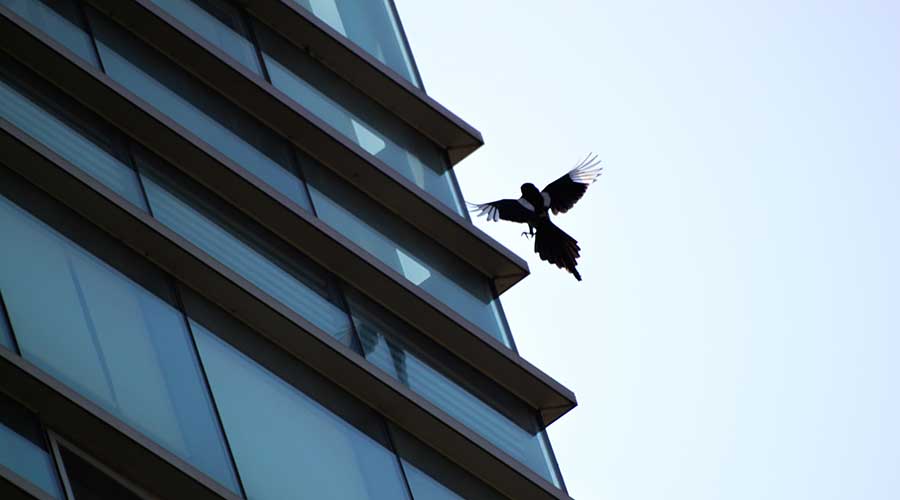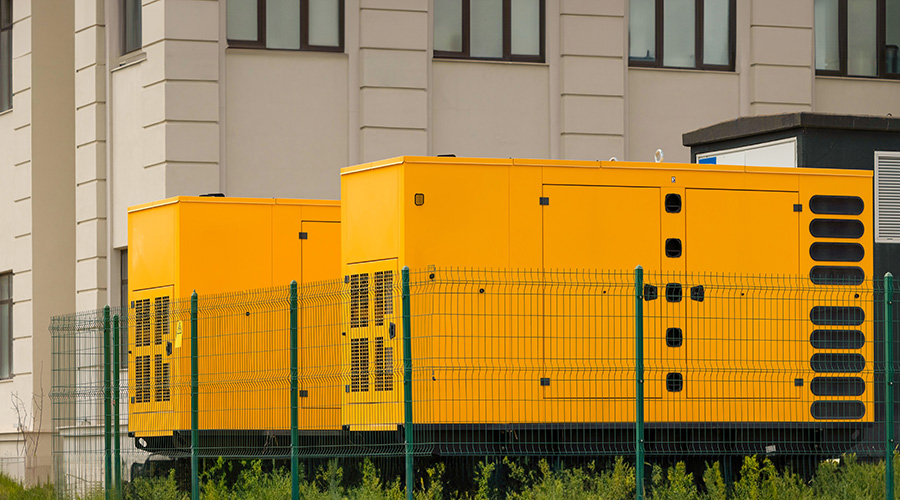Note: This is the first part of a two-part article.
Buildings and birds often do not get along. Maintenance and engineering managers in healthcare facilities have a long history of dealing with birds, often as nuisances that create problems around air intakes, rooftop equipment and window ledges.
Unfortunately, birds’ interactions with buildings often are deadly. Bird collisions with buildings in the United States likely kill between 365 million and 1 billion birds, with a median estimate of 599 million, according to researchers with the Smithsonian Institute. In the case of healthcare facilities, managers need to be especially aware of the role of natural light and exposure to nature in the patient healing process.
“People who are in healthcare facilities often appreciate birds a lot because they're generally confined to a relatively small area,” says Christine Sheppard, director of the glass collisions program with the American Bird Conservancy. “They notice birds that are outside their windows. It's a good thing to have bird-friendly habitats outside of a building that has bird-friendly glass.”
Building owners, managers and architects have options to make buildings – in particular, windows – friendlier to birds.
New construction and renovations
In the case of new healthcare facilities, the goal is to start the process of bird-friendliness from the beginning.
“The critical thing is to think about birds from the beginning,” Sheppard says. “When you do that, you can make choices like external insect screens that are bird-friendly, as opposed to designing a building and then saying, ‘Okay, we're going to swap out the glass,’ because then you're really doing a retrofit, and it's going to cost you money.”
For renovations, the process involves slightly different considerations.
“Obviously, you would not replace a set of small windows with a couple of gigantic ones because the area of pieces of glass correlates strongly with the number of collisions,” Sheppard says. “Incorporating bird-friendly materials when possible, planning to use retrofits as part of the construction process, so that you're not changing out the glass for something that is expensive is something you can definitely do as part of renovation.”
Component considerations
A closer examination of the materials and process involved in building construction and renovations reveals critical opportunities for facility architects, owners and managers to make choices that can prevent potentially fatal collisions between birds and buildings.
Glass. “Glass is far and away the primary issue,” Sheppard says. “There are tie-ins with lighting, and that can be something it's important to look at in facilities. Birds are attracted by light when they're migrating, particularly in spring and fall, so that's when most collisions occur. Really bright lighting can encourage birds to move in the direction of the lights. The birds don't hit the buildings at night. They migrate at night, and the lighting contributes significantly to the pattern in which they come down to the ground.”
Managers seeking to make new and existing windows friendlier to birds have a range of strategies and tactics to consider.
"The best way to prevent bird collisions is to make your glass bird friendly,” Sheppard says. “Insect screen on the outside of a window makes it safe for birds. It doesn't have to be something weird or fancy to be effective. That is also a factor in new construction when you're deciding on windows. There are a variety of ways that can make glass safer birds, and they can be cheap and quick to put up, so they can go a long way toward building a building with bird-friendly glass.”
Lighting. “As many lights as possible should be on motion sensors,” she says. “You should use the minimum amount of light possible for a particular use. Lights should be down-shielded so there is less (light) trespass. Light pollution negatively impacts human health. For health institutions, this is a really critical place to start. If you've got bright lights outside the windows all night long, there is a whole fleet of negative things that happen to the human body when it's exposed to too much light. The same thing holds true for not just birds but for other wildlife. So minimize light as much as possible.”
Bird-friendly considerations on facility lighting go beyond system design. They extend to product selection — in particular, LED lights, which have become increasingly popular options for lighting upgrades for organizations seeking energy savings. LED technology can have downsides for birds, which are generally attracted to light.
“As people are switching out bulbs to save energy, they're going toward LEDs,” Sheppard says. “But what you see over and over again, especially for outside lighting and perimeter lighting, is that people put in LEDs, which require much less energy but provide a much brighter light. There have been neighborhoods across the country where they put in these bright LEDs, and people complain. So absolutely pay attention to that and learn about it before you make a plan.”
Green roofs. “Green roofs have been shown to provide important resources to birds,” Sheppard says. “They can provide food, they can provide shelter in some cases, and they can provide nesting habitats. They can also encourage birds to move into the vicinity of glass that they might not otherwise approach.
“If you look at legislation around the country that's mandating bird-friendly design, they usually call out glass that is immediately adjacent to a green roof as a priority. It certainly is something a bird could spot from quite a distance away, so it may encourage more birds to be in that neighborhood than you would otherwise have had. But the benefits of green roofs really outweigh the downside.”
Dan Hounsell is senior editor of the facilities market. He has more than 30 years of experience writing about facilities maintenance, engineering and management.

 Beyond Backup Generators: Building Layered Energy Resilience
Beyond Backup Generators: Building Layered Energy Resilience Shannon Health System to Acquire Scenic Mountain Medical Center
Shannon Health System to Acquire Scenic Mountain Medical Center First Rehabilitation Resources Ensnared in Email Breach
First Rehabilitation Resources Ensnared in Email Breach Hand, Foot and Mouth Disease on the Rise
Hand, Foot and Mouth Disease on the Rise Preparing for the Hazards of Winter Weather
Preparing for the Hazards of Winter Weather